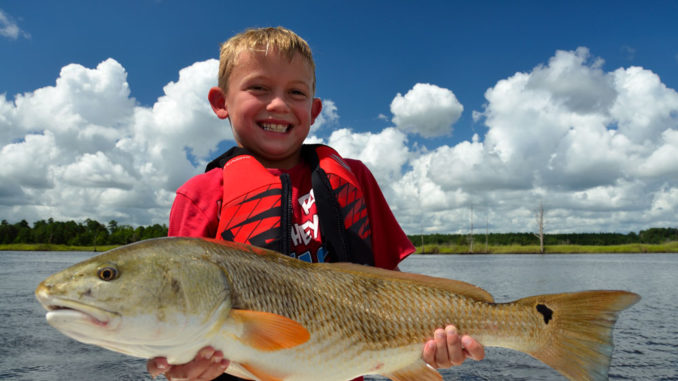
By May, spring fishing is going full bore inshore and offshore, and that includes fishermen who barely think about anything except redfish.
For most, the salty marshes and rich oyster beds are prime locations. However, anglers in the Georgetown area have something special: a major freshwater river system that ends right at the saltwater/freshwater mixing line.
Brackish habitats with great structure — logs and stumps — are great places to target spring reds, with double-digit days not uncommon.
Jordan Pate of Carolina Guide Service frequently patrols for reds well into the brackish zone.
“Despite common thought, redfish will venture well into the freshwater rivers to feed,” said Pate (843-814-7900). “Some of the best bites occur at the lower end of the river systems, right after a recent rainfall event.
“We have the Pee Dee, Black, Waccamaw and Sampit coming into Winyah Bay right at Georgetown, and we catch redfish within sight of International Paper’s smokestack.”
The rivers are loaded with submerged structure, including stumps, logs and remnant structures used on the historic rice plantations.
“The structure in these rivers may claim your favorite lures, but the logs and underwater obstructions provide habitat for mullet and shrimp that feed the redfish, and plenty of flounder and trout, too,” Pate said.
It doesn’t hurt that baitfish make a strong showing in May, moving into the brackish water and attracting reds and other gamefish.
Certain areas can hold fish better than others. Pate concentrates on ditch mouths, shallow flats and conversely, deep banks with structure.
“Productive spots to look for are small drains on falling water where there may only be a small temperature change of one or two degrees. I also find banks with less current flow are more productive than the outside edges of deep bends where the current is swift,” he said.
The reds will quickly move to different areas when the bait begins to set up on different banks. Learning to cover ground is a key technique in these brackish water systems.
“I will cover a lot of ground with spinnerbaits, Chatterbaits, and small crankbaits. I may slow down and fish Flukes and other soft plastics when I start to pick off a few from a specific area,” he said.
Since baitfish have plenty of avenues of escape available, redfish will become aggressive in these areas for fear or losing a feeding opportunity that makes noisy/flashy lures the golden ticket to quick action.
Typically, redfish will stay no more than a few miles upstream of Georgetown, but it is not uncommon during a dry season for reds to venture well upstream into the interior of the coastal counties.
“Under drought conditions, I have heard reports of redfish as far as 20 miles upriver,” Pate said.


